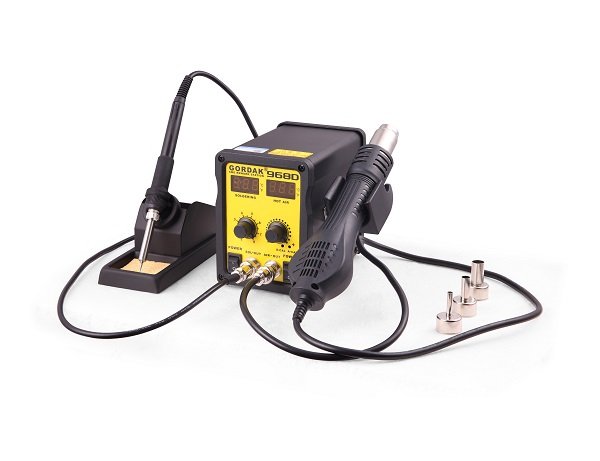Soldering is a process that allows you to join or fuse two metal objects together through the use of heat, a hot iron, and a metal alloy filler made of lead and tin known as solder. This technique is commonly used in engineering and electronics professions for the creation and repairs of products. Unfortunately, this process and work productivity can be severely hindered if you find that your solder won’t stick.
There are five main reasons why solder might not stick to metal. Typically, the issues lie with lack of heat, dirty equipment, or product material, which could ultimately come down to poor technique. Fortunately, these issues can be fixed easily and quickly with a few simple steps.
1.Solder Tip Has Oxidized
Your soldering iron is paramount to the process of soldering, and if it is defective, your solder might not even melt, let alone stick. If the solder tip has oxidized, it will prevent anything from sticking.
Resolution
To resolve this issue, you’ll want to clean the tip of the soldering iron. First, turn the iron on to a typical work range of about 300°C. Once it is sufficiently heated, you’ll want to apply a flux-colored solder onto the tip and wait for the heat to activate the flux. This will cause a chemical reaction that will remove any mild oxidation with the help of brass wool or specialized cleaners applied to the tip.

2.Dirty or oxidized parts
The tip of your soldering iron isn’t the only thing that needs to be clean and free of oxidation. Your working materials must be, as well.
Resolution
If you are attempting to solder an older piece of metal, it will most likely need a solid cleaning first. The use of a strong flux should sufficiently clean the metal enough for soldering. Copper parts tend to oxidize quickly once exposed to air, so these can be cleaned easily with pink erasers to give them a light sanding before soldering.
3.Soldering Iron is Not Hot Enough
If the solder isn’t hot enough, it won’t melt or adhere to the desired metal. This issue is usually caused by the soldering iron being set to an improper temperature, or the iron itself has a wattage that is too low for the solder size you are using.
Resolution
If you notice your solder isn’t sticking, check your solder material and compare it to the wattage of your soldering iron. You might find that the iron isn’t the right match for the job in terms of wattage and needs to be switched out for another.

4.Metal is Not Hot Enough
Soldering is temperature-sensitive. The metal has to be hot enough to melt metal. Otherwise, it won’t adhere properly.
Resolution
Hold your soldering iron against the metal for an extended time until it reaches temperatures high enough for the solder to melt and adhere to the metal. You can also use a propane torch to heat the exterior of the metal you are working with, depending on its size and metal type.
5.Poor Technique
If you want to solder efficiently, don’t let solder sit on the soldering iron and then carry it over to the joint. If you do this, you will burn off the flux from the solder and you won’t be able to adhere it to metals effectively.
Resolution
If you are constantly allowing solder to sit on your soldering iron before adhering it to the joint, stop. The only real resolution to this issue is to learn proper soldering techniques and practice them. Over time, you will know what not to do and are less likely to have solder fall off from poor technique.
Contact us
At Guangdong Shunde Gordak electronic company, we manufacture high quality and the best soldering rework station that durable and original.
Our teams of tech experts are globally recognized for quality delivery, and are committed to producing top-notch rework station. You can count on our delivery of the product which prompt and timely. Kindly place a call to order for yours today or you can check to see the available products.



